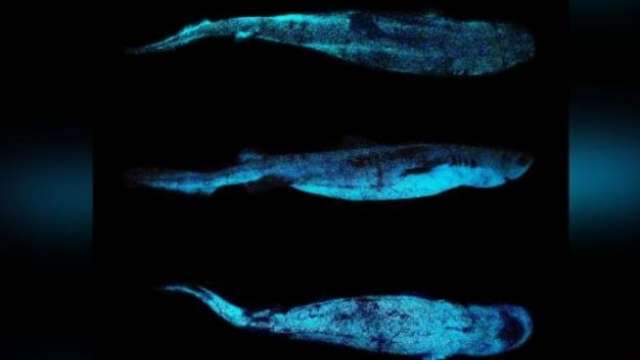
Documentation of sharks endowed with a natural ability to ‘glow’ in the dark – have been documented over the past week in the ocean near New Zealand, setting up a storm among the world’s biological-research community.
Researchers who have followed the three glowing sharks that go by the names ‘wrinkled shark’, ‘black thorn shark’ and ‘southern thorn shark’ – claim that all three produce natural light that glows in the dark, apparently to confuse their enemies and hide from them.
The fascinating study began tracking the sharks about a year ago, and they live at a depth of 1,000 meters below the surface of the water – in an area called the ‘Twilight Zone’ of the ocean, into which the sun’s rays do not penetrate at all.
According to the researchers, these are extremely rare sharks that have been observed several times before, but due to the fact that they are elusive and live in an area that is difficult to document – have never been documented so far.
Here are some more interesting facts about these sharks:
1. The phenomenon of glow light production is called bioluminescence and it occurs naturally in many marine creatures, such as jellyfish and squid.
2. The wrinkled shark may reach a size of 180 cm, and according to the researchers is a giant shark that preys on sharks smaller than it.
In the other two sharks, the glowing light they emit from their bodies ‘blinds’ their predators and enemies, thus allowing them to escape and be saved from them. However, the researchers found that in the shark, the rim is wrinkled, because it is so large, it does not have many enemies and the light it emits is the ‘flashlight’ that illuminates the seabed in search of food or camouflage.
4. This is the first time ever that such sharks have been documented in the New Zealand area.
5. Only 57 of the 540 species of sharks that exist, are capable of bioluminescent (capable of producing glowing light).
6. The sharks were caught in the camera lens of the National Institute for Water and Atmospheric Research, which is generally designed to measure fish stocks.
7. The most luminous part of sharks is their dorsal fin, but now researchers are examining whether it is used for purposes other than those mentioned.
View documentation: